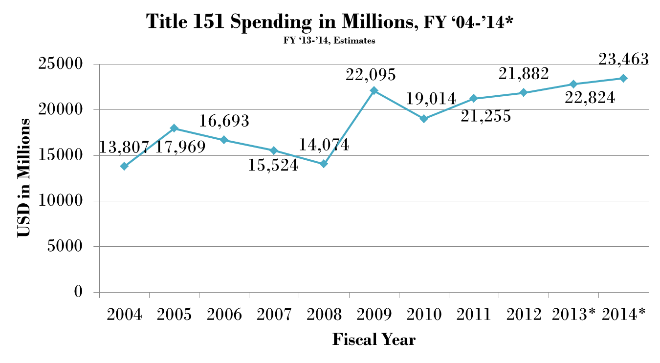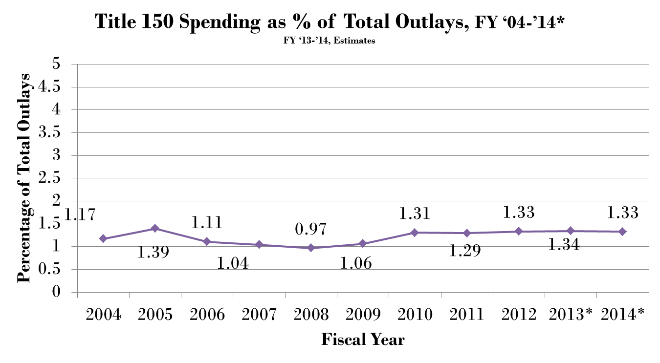 https://www.flickr.com/photos/walkingsf/8263591060/in/photolist-8VRdq7-9yvL84-5y
https://www.flickr.com/photos/walkingsf/8263591060/in/photolist-8VRdq7-9yvL84-5y
What the Fight for Foreign Aid Funding is Really About | ASP
Each year, foreign aid spending comes under fire during the budget negotiation process. Those in favor of cutting spending argue development and assistance programs are ineffective and the funds too often fall fuel corruption rather than work to eliminate it.
As the graphs below show, international development and humanitarian assistance spending and international affairs spending as a whole has steadily increased to pre-recession levels. Development and diplomacy spending are key components to US foreign policy, but the reoccurring debate surround it suggests there may be compelling evidence against the current structure of aid programs.
Opponents of foreign aid often argue no one ever “graduates” from aid– but this myth has been busted many times. Taiwan, South Korea, and Singapore were once beneficiaries of US aid and are now among the top importers of US goods. Why, even with the many successes of development programs like the Marshall Plan, are the merits of foreign aid still questioned?
Despite these successes, some still see foreign aid as a broken and wasteful system. More effectively communicating the benefits of development and diplomacy initiatives has been a long-standing challenge, chronicled in an earlier post in this series, “Telling the Story of (US) AID“. Message campaigns have done little to shift the debate though, suggesting the challenge is not only in how to share program success but also what information should be shared.
Deciding what success looks like, what metrics would indicate it, and how to discern those metrics are the first steps to building stronger support for development. Defining success for development and aid programs is difficult as the desired outcomes vary from project to project. Measuring success by a particular initiative’s ability to achieve its intended outcome sounds like a simple goal, but even this can be a challenge.
The Foreign Assistance Act of 1961 declared the principal objective of US foreign development to be, “the encouragement and sustained development of the people of developing countries in their efforts to acquire the knowledge and resources essential to development, and to build the economic, political and social institutions that will improve the quality of their lives.” Such broad and subjective terms do leave room for innovation, and diverse definitions of success for equally diverse programs, but it complicates measuring impact.
Even when there are explicit objectives, measuring the impact of development and aid programs requires the use of carefully chosen metrics and methodologies. Until the 2010 QDDR, there was little standardization of impact metrics by the government. Since the Obama administration’s public commitment a foreign aid budget “based not on dollars spent, but outcomes achieved,” there has been some progress in reaching a consensus.
Metrics and methodology are still a key focus in the 2014 QDDR, Alex Thier, Assistant to the Administrator of USAID, said at a June ASP event. But the challenges of communicating the benefits of aid are bigger, still. Concerns over corruption can decimate development budgets, even when programs are successful.
Strong governance and capacity building measures are vital to the success of any development program. However, when foreign aid falls out of favor and its budget is threatened, operating costs- including resources for capacity building, are often the first go, Thier also said.
Reviewing projects to better identify their goals and how to measure their progress towards them is set to be a major focus on the 2014 QDDR. A stronger emphasis on meaningful metrics, rather than measurement for the sake of measurement, could go a long way to shifting the foreign aid debate from why to how.
Diplomacy and Development Series
LTG Kennedy and BGen Cheney LA Times Op-Ed
Where Are All the Ambassadors?
Intro the Series on Foreign Aid, Diplomacy, and Development
Other Related Posts
Are We Winning? Measuring Success in Afghanistan











[…] What the Fight for Foreign Aid Funding is Really About: Defining Success in International Developmen… […]